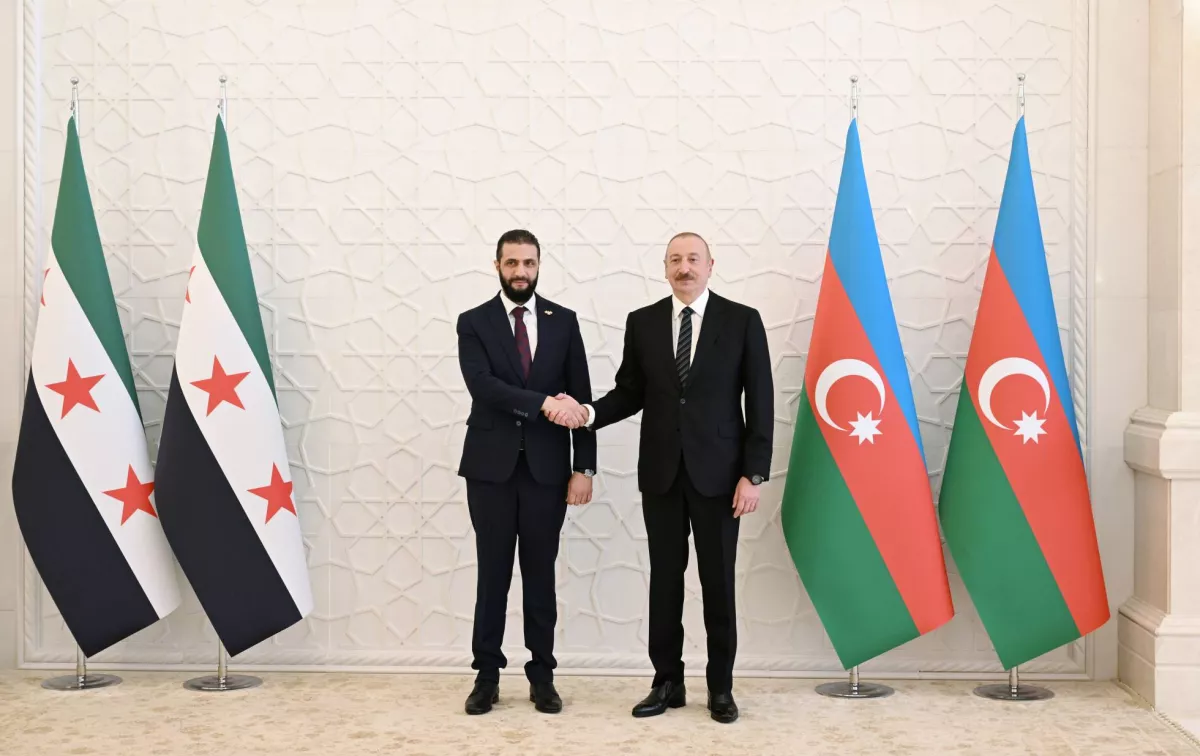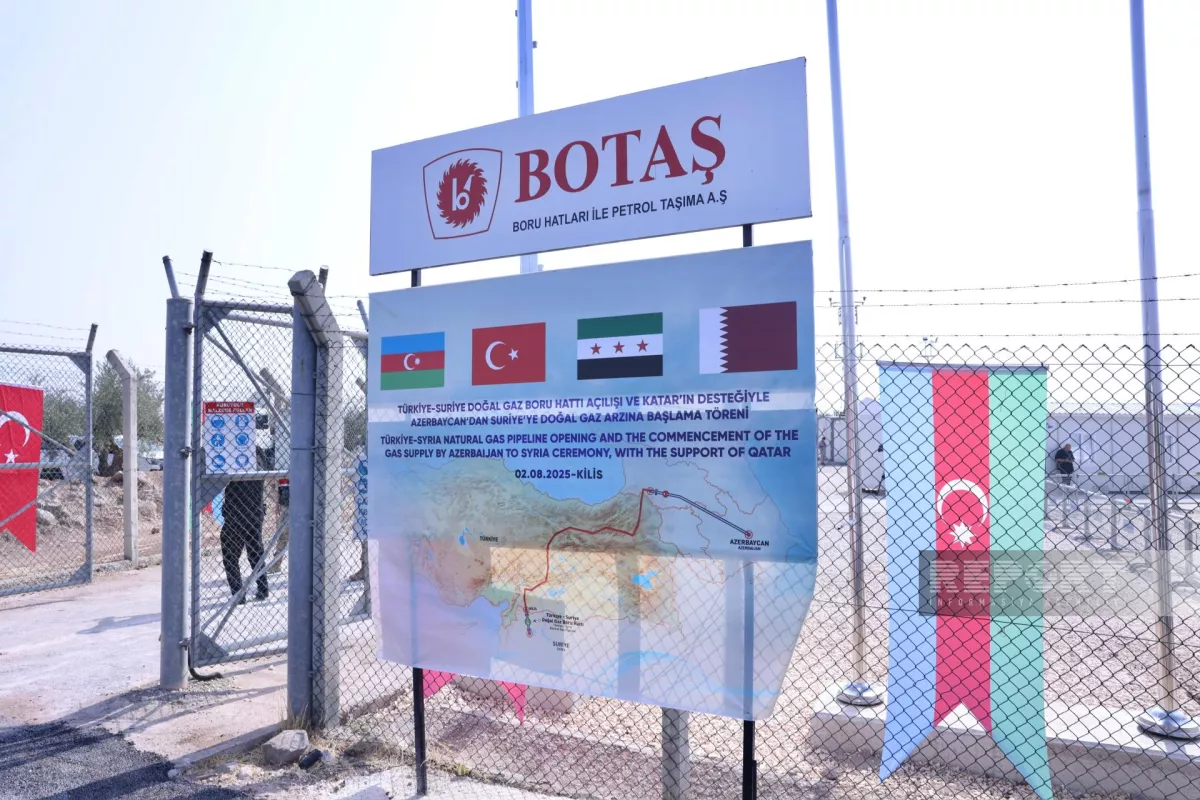Azerbaijan’s Middle Eastern breakthrough Baku connects Damascus to its gas network
On August 2, a milestone ceremony took place in the Turkish city of Kilis to mark the launch of Azerbaijani natural gas exports to Syria via Türkiye. The event was attended by Azerbaijani Economy Minister Mikayil Jabbarov, Turkish Minister of Energy and Natural Resources Alparslan Bayraktar, Director General of the Qatar Fund for Development Fahad Hamad Hassan Al-Sulaiti, and Syrian Minister of Energy Mohammed Al-Bashir.
Following speeches from the officials, the dignitaries symbolically turned a gas valve on stage, formally inaugurating the flow of Azerbaijani gas to Syria through Turkish territory. In the initial phase, Azerbaijan plans to supply Syria with 1.2 billion cubic metres of natural gas annually.
From a technical standpoint, the project represents the opening of a new energy corridor through allied Türkiye. Politically, it reflects the fruits of Azerbaijan’s consistent regional strategy. Geoeconomically, it marks a step beyond market expansion—reshaping the very map of Baku’s sustainable influence across the Middle East.
The formal launch of gas supplies builds upon a series of preliminary steps. In July, Ahmed al-Sharaa, the transitional President of the Syrian Arab Republic, paid a visit to Baku. During his meeting with the Azerbaijani leadership, the two sides stressed the importance of bilateral cooperation, particularly in the energy sector—an area of acute concern for Syria amid its ongoing energy crisis.
It was noted that the forthcoming project to export Azerbaijani gas to Syria via Türkiye would contribute to strengthening Syria’s energy security. Azerbaijan also expressed its readiness to support the restoration of Syria’s energy sector. President al-Sharaa underscored the significance of Azerbaijan’s role in helping his country overcome its serious energy challenges, stating that this initiative would support Syria’s development.

Prior to this, the leaders of the two countries held a substantive discussion in Antalya on the sidelines of the Diplomatic Forum. These contacts focused on practical initiatives. Azerbaijan reaffirmed its readiness to take part in Syria’s post-conflict reconstruction. The support extends beyond humanitarian aid, with particular emphasis on infrastructure, energy, and logistics.
On the instructions of President Ilham Aliyev, a delegation led by Deputy Prime Minister Samir Sharifov travelled to Syria. Representatives of key Azerbaijani institutions conducted on-the-ground assessments to identify specific areas where Baku could contribute to Syria’s stabilisation and development. This visit was far from symbolic—it aimed to explore mutually beneficial opportunities and lay the groundwork for long-term cooperation.
Today, Azerbaijan is expanding its ties not only westward and into Central Asia, but also deepening its engagement in the Middle East—a region in need of pragmatic partnerships. Azerbaijan’s foreign policy is shaped by consistency, interest-based pragmatism, and strategic flexibility. This is precisely why Baku is increasingly seen as a reliable partner—one that does not foster dependency, but instead offers meaningful alternatives.
The gas route to Syria is the product of this strategic logic. It not only opens a new export direction but also paves the way for further energy scenarios. Syria is interested in securing stable supplies of Azerbaijani gas and may evolve into more than just a destination country—it could also serve as a transit hub. A previously operational pipeline to Jordan was damaged during the conflict and taken out of service, but its restoration remains feasible. This creates the potential for gas deliveries through Syria all the way to Egypt, building on the existing network and modernised infrastructure.
Currently, Azerbaijan supplies natural gas to 12 countries—10 of which are European, and 8 are members of the European Union. However, the development of new routes contributes to a more resilient export structure. The Middle East region offers not only growing demand, but also a unique logistical configuration. Türkiye plays a pivotal role as a transit hub and as a key link between the Caspian Basin and the Levant. Azerbaijani gas transiting through Turkish territory is acquiring strategic weight—especially in a global context of intensifying competition for energy resources.

For Azerbaijan, gas exports to Syria are neither a one-off event nor a symbolic gesture. They represent the continuation of a systemic approach—one that aligns commercial benefit with long-term strategic interests. Energy remains a key instrument of international positioning. It defines the parameters of resilience while enabling Azerbaijan to deepen its presence in regions where stability is built not on rhetoric, but on infrastructure.
At the same time, Azerbaijan is expanding its capacity for electricity generation and export. The country is increasing output, creating surplus capacity, and reaching a stage where energy exports are becoming a natural extension of domestic development. The Middle East is viewed as one of the promising directions in this regard, particularly within the framework of ongoing discussions on interregional energy integration.
Gas, electricity, transport corridors, and diplomatic frameworks — these are all elements of a single matrix. The launch of gas supplies to Syria is not merely the opening of another route; it reflects Azerbaijan’s ability to assess the geopolitical landscape with precision, seize political windows of opportunity, and act at a pace that helps shape the regional agenda. A region long marked by instability is increasingly becoming a space for new connections. And those who enter it not with slogans, but with concrete projects, gain a competitive edge.
Azerbaijan approaches this environment with composure and strategic clarity. Gas exports to Syria are a logical extension of its energy diplomacy and broader foreign policy. It is a signal understood not only in Damascus, but also in Jordan, Egypt, Türkiye, and across Europe. And if one reads the map without clichés or outdated assumptions, it becomes clear: this is not a mere branch — it is the beginning of a new axis.








